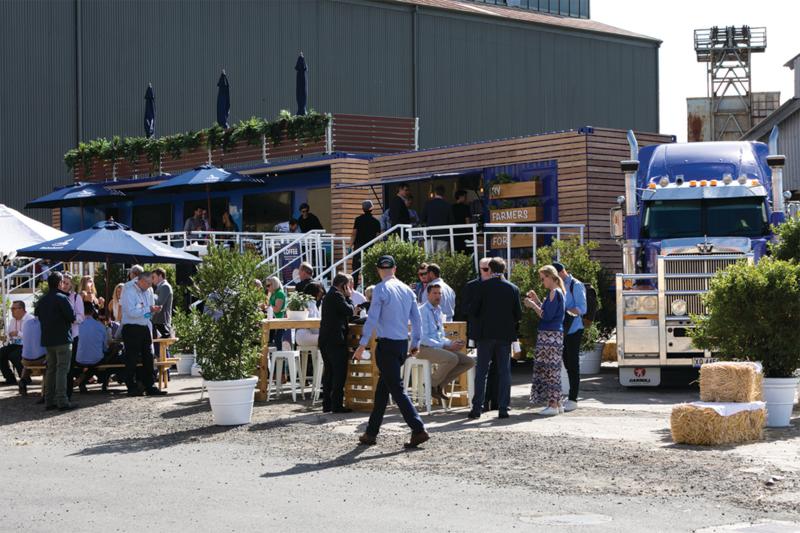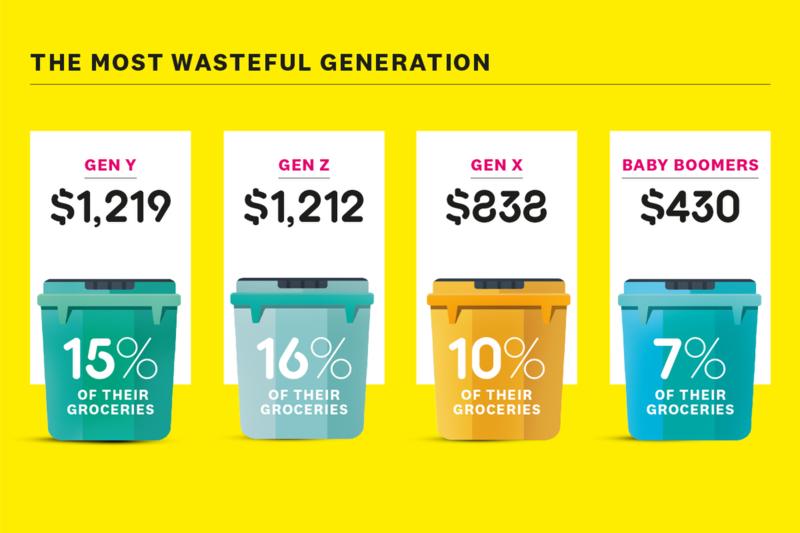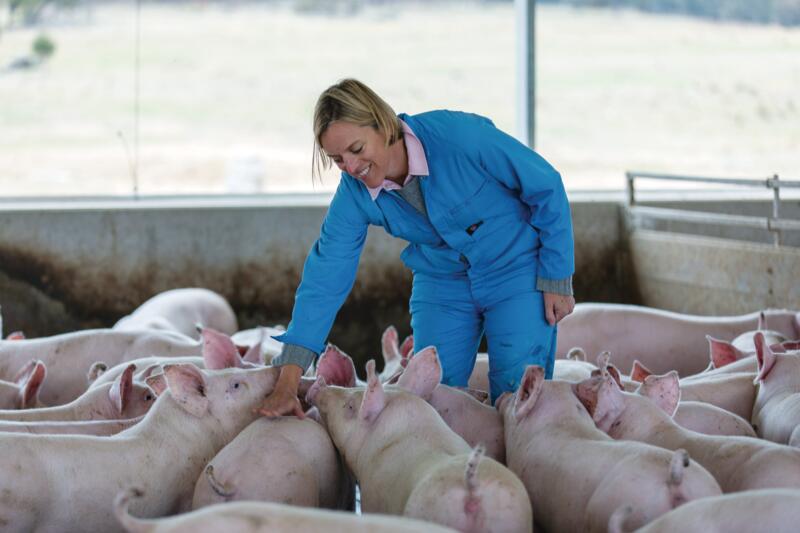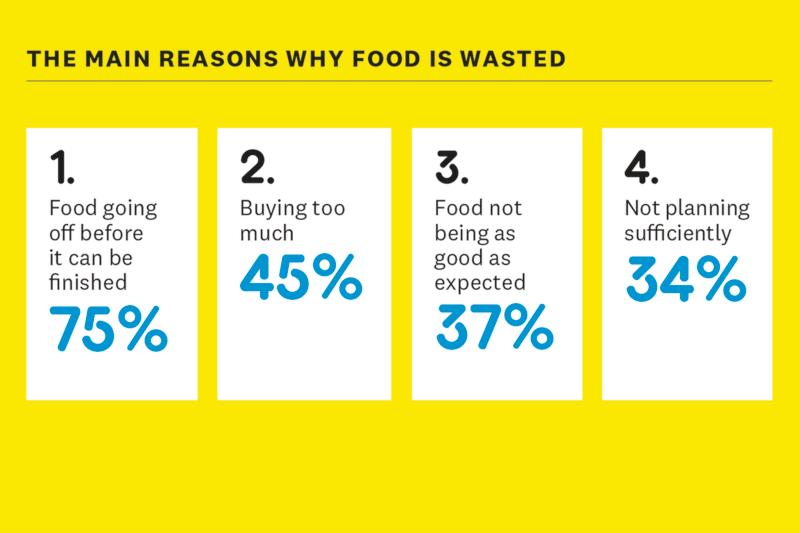DID you know Australians binned $8.9 billion worth of food last year? Bad habits, online convenience and poor planning are to blame with NSW and Western Australia the nation’s worst, with the average household wasting 12% of their grocery shop per year.
These alarming figures were shared in Rabobank’s Food Waste Report, which was launched at the Farm2Fork Summit in Sydney in March, and equates to a cost of $890 for the average Australian household per year. The amount of waste was slightly down from $9.6 billion in 2017, a 7% reduction.
“As our population increases we will struggle to feed additional mouths,” said Glenn Wealands of Rabobank Australia and New Zealand at the summit.
“If we don’t curb our waste, we could run out by 2050.” – Glenn Wealands.
“While the reduction in food waste is a global responsibility, we all – as individual consumers can play a significant role in sustaining this planet for generations to come.
“While it is pleasing that Australians consumers are wasting less food compared to 12 months ago, there is clearly much to do to raise awareness about food production and waste and more urgently implement better practices to reduce waste – while also improving the finances of all Australians,” Glenn said.
RELATED: Organic broccoli farmers innovating with powders
The Food Waste Report was delivered at Rabobank’s Food Truck – a brand new interactive, multi-purpose vehicle, which will tour the country throughout the year, bringing better food sustainability knowledge to Australia.
 The Farm2Fork summit saw the launch of Rabobank’s Food Truck – a new interactive vehicle that will tour the country, bringing food waste knowledge to Australia. Source: Rabobank.
The Farm2Fork summit saw the launch of Rabobank’s Food Truck – a new interactive vehicle that will tour the country, bringing food waste knowledge to Australia. Source: Rabobank.
Added Wiebe Draijer, global chair of Rabobank, “We need to find all sorts of new ways to feed our world in a sustainable and healthy way so there’s biodiversity preserved and land preserved but also enough food produced – that is the big, big challenge.
“A third of the food that is produced around the world is wasted – it either gets lost at home or in the supermarket because of a date that doesn’t optimally fit the definitions of what is really usable, and also it gets lost at the farm.”
The future of the food waste economy
Over-regulation cropped up as a theme that hinders the adoption of waste solutions for corporations, farmers and consumers. Simple things like bin collection, council regulations, recycling, use-by dates and the approach to reusing waste are all areas Australia could improve on, and learn from places like Europe or San Francisco, said Glenn.
 Source: Rabobank Food Waste Report, based on a poll of 2,300 Australians aged between 18 and 65.
Source: Rabobank Food Waste Report, based on a poll of 2,300 Australians aged between 18 and 65.
There are lots of “funky new” businesses that will emerge from waste-cutting opportunities, Wiebe said, such as a restaurant chain that uses leftovers from a supermarket, or The Waste Factory in the Netherlands, which produces soup from the tops and bottoms of tomatoes that would otherwise be tossed.
“Every dollar invested in reduction of waste earns its money back 14 times.” – Wiebe Draijer.
“On the one hand it’s [waste] a massive thing and on the other it’s complex and it’s small in its nature. It requires changing behaviour, new supply chains to consumers, new pricing to emerge, it requires all sorts of complex things – it’s a multifaceted monster,” Wiebe said.
Food waste warriors - Farmers helping to reduce food waste
Australia has producers embracing the benefits of waste-cutting and value-adding. NSW Farmers member
Fiona Hall from BiteRiot!, an apple and cherry producer near Orange, uses imperfect fruit to create cherry juice that’s opened new markets and profitable returns.
RELATED:
Maggots: The livestock feed no-one saw coming
Pig farmer from Young and NSW Farmers’ Pork Committee deputy chair Edwina Beveridge is also trailblazing in this space by feeding her pigs food waste products and
converting their manure into electricity – saving dollars and the environment.
Edwina spoke at the Farm2Fork event about the importance of waste adoption in the wider agricultural community.
 Edwina Beveridge on her pig farm. Photo by: Matt Beaver.
Edwina Beveridge on her pig farm. Photo by: Matt Beaver.
“I really love what we do – it’s fantastic to be producing something that I know is sustainable and is really good for the world,” she said.
“We can capture our gas from our pig manure and turn it into electricity.” – Edwina Beveridge.
“It’s fantastic because that is our fourth-biggest cost and we’ve now completely eliminated that and turned it into a revenue item.
“Last year we used 13,500 tonnes of food waste products – things that would have otherwise have gone to landfill,” Edwina said.
Edwina Beveridge spoke at the Farm2Fork summit about her commitment to waste absorption on her farm. Source: Rabobank.
“At the moment we have more food waste than we can use. We would like to have more pigs to accommodate that waste, but we’re handicapped by regulation. I’d like the government to back farmers who are doing the right thing, and not have red tape that’s crippling.
“We can produce a lot of pork at a very affordable price but do it without a huge amount of land, using waste, recycling our pigs’ manure and even making our own electricity – I think farms like ours are the answer to food security.”
How Australia’s food waste stacks up
People in Victoria made the biggest improvement, reducing their food waste year on year by 5.5%, totalling almost $300 a year per household.
.jpg) Source: Rabobank.
Source: Rabobank.
Interestingly there is a small difference between city dwellers (13%) and rural counterparts (11%) waste levels, which is said to relate to the trend: the closer the food source, the lower the amount of food waste.
How do we contribute to unnecessary food waste?
 Source: Rabobank Food Waste Report, based on a poll of 2,300 Australians aged between 18 and 65.
Source: Rabobank Food Waste Report, based on a poll of 2,300 Australians aged between 18 and 65.